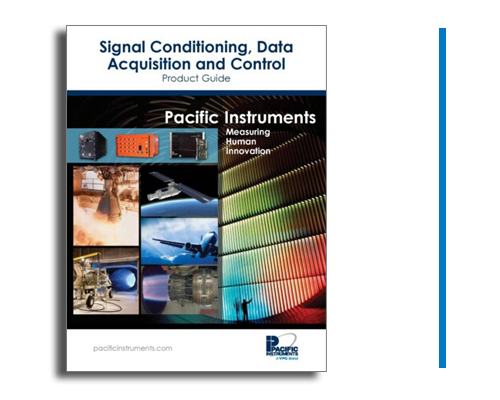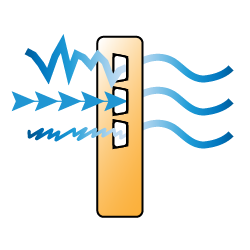Understanding Signal Conditioning: The Key to Accurate Data Acquisition
What Is Signal Conditioning?
Signal conditioning is the process of manipulating a signal in a way that prepares it for the next stage of processing—typically data acquisition. In test and measurement environments, raw signals from sensors are often too weak, noisy, or incompatible with the input requirements of data acquisition systems (DAQ). Signal conditioning bridges this gap by amplifying, filtering, isolating, and converting signals into a form that ensures accurate and reliable measurements.

Why Signal Conditioning Matters
Improves Measurement Accuracy - Poorly conditioned signals can introduce errors, distortions, and noise that compromise the integrity of test results. High-quality signal conditioning ensures that the signal entering the DAQ system is a true representation of the physical phenomenon being measured.
Protects Equipment - Isolation and overvoltage protection prevent damage to sensitive DAQ hardware, especially in high-voltage or industrial environments.
Enables Compatibility - Signal conditioning allows sensors with different output types (e.g., thermocouples, strain gauges, RTDs) to interface
Core Functions of Signal Conditioning
Function and Purpose
Amplification - Boosts low-level signals to match DAQ input range
Filtering - Removes unwanted noise and frequency components
Isolation - Electrically separates signal source from DAQ to prevent interference
Linearization - Corrects non-linear sensor outputs for accurate interpretation
Excitation - Supplies power to active sensors like strain gauges or RTDs
Conversion - Translates signals (e.g., analog to digital, voltage to current)
How Signal Conditioning Affects Test Results
Signal conditioning directly impacts the resolution, accuracy, and repeatability of test data. For example, a strain gauge without proper excitation and filtering may produce erratic readings, leading to incorrect conclusions about material stress. Conversely, a well-conditioned signal ensures that even subtle changes in the physical environment are captured and quantified reliably.
Evaluating Signal Conditioning in DAQ Systems
To determine whether a DAQ system has excellent or poor signal conditioning, consider the following criteria:
Indicators of Excellent Signal Conditioning
- Low noise floor and high signal-to-noise ratio (SNR)
- Built-in filtering and amplification tailored to sensor types
- Flexible input ranges and sensor compatibility
- High input impedance to avoid loading effects
- Robust isolation for safety and signal integrity
- Precision calibration and temperature compensation
Signal Conditioning at Pacific Instruments
Pacific Instruments offers advanced signal conditioning modules integrated into our DAQ systems, designed for high-performance test environments. Whether you're working with aerospace structures, automotive components, or industrial machinery, our systems ensure that your measurements are accurate, repeatable, and protected.


